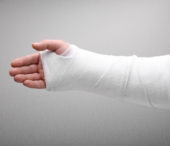Kalarippayat (Kalaripayattu)
It is believed that the warrior saint Parasurama threw his battle axe into the sea and that the sea withdraw till where the axe fell-the land of Kerala emerged. Parasurama then established 108 Kalaries and taught the art of martial training to 21 chosen disciples, who are known to be the pioneers of Kalarippayat. Even today, Lord Parasurama and his disciples are worshiped in the Kalaries. Kalarippayat has its roots in Dhanurveda, the ancient Indian science of warfare.
Turning back the pages of history……
Travelogue of 14th and 16th centuries ‘ travelers of Kerala like Duarte Barbosa give evidence that Kalarippayat as practiced today, evolved during the 9th through 12th centuries A.D. The popular ballads of Malabar (Northern Kerala) which depict the heroics of Kalarippayat maestros are definite proof of the influence this art form was having on Kerala society. Kalarippayat played a vital role in the education of the youth and the training of the warriors.
Kalarippayat... rituals and practice
 The Kalari ie. The training arena has to be built in specific dimensions. The structure of Kalari (cocoon-like) is greatly suited for training in the humid climate of Kerala. The ritualistic and spiritual atmosphere plays an important role in forming a strong character and moral attitude to the disciples. To acquire discipline and concentration, series of symbolic rituals are practiced everyday. The training is mainly divided into three parts: Maithari, Kolthari, and Ankathari.
The Kalari ie. The training arena has to be built in specific dimensions. The structure of Kalari (cocoon-like) is greatly suited for training in the humid climate of Kerala. The ritualistic and spiritual atmosphere plays an important role in forming a strong character and moral attitude to the disciples. To acquire discipline and concentration, series of symbolic rituals are practiced everyday. The training is mainly divided into three parts: Maithari, Kolthari, and Ankathari.
Kalarichikilsa
(also called Kalarichikitsa, Kalarichikiltsa) or Kalari Therapy is a system of medicine based on Ayurveda, specializing in treatment of orthopedic disorders, sports injuries and neuromuscular problems like back pain, spondylosis, arthritis, inborn imperfections of human body etc. It is a form of therapy which evolved from Ayurveda and developed further in a more specific direction, as a result of the needs of a speedy recovery from sports injuries for the warriors of ancient Kerala.
The practitioner, i.e. The Gurukkal does the treatment like bone setting and massages using specially formulated oils and herbs. He undertakes specialized studies in the science of marmas (vital spots)
In the human body. there are certain spots where a bruise or a blow can cause death or numbness of some organs. These spots numbering to 107 are called the marmas or the vital spots. The knowledge about these marmas plays a major role in the effective practice of Kalari Chikilsa.
These spots numbering to 107 are called the marmas or the vital spots. The knowledge about these marmas plays a major role in the effective practice of Kalari Chikilsa.
The underlying principle of Kalari Chikilsa is that an abnormality to any system of the human body such as nervous system, musculoskeletal system can happen only if anyone or more of the 107 vital spots are bruised. The treatment is all about detecting the vital spots affected and curing them to normalcy.
The different methods of treatment used in Kalari Chikilsa are Uzhichil, Kizhithirumu, Njavarakizhi & Nasyam
The best. but why?
The fact is Kalarichikilsa concentrates on treating the affected vital spots, ie. on curing the root cause and not the symptoms,  makes it the most suitable method for the treatment of sprains, bruises, fractures, and dislocations. In Kalarichikilsa, nothing hostile to the body is used and nothing toxic is left behind, unlike Allopathic treatment. This makes Kalarichikilsa free from side effects, and ideal for special care areas like Sports Medicine.
makes it the most suitable method for the treatment of sprains, bruises, fractures, and dislocations. In Kalarichikilsa, nothing hostile to the body is used and nothing toxic is left behind, unlike Allopathic treatment. This makes Kalarichikilsa free from side effects, and ideal for special care areas like Sports Medicine.
Several cases where surgery is a must in modern techniques of therapy can be cured by Kalari Therapy with out the surgical blade coming into play. Also, there have been so many cases in which Kalarichikilsa has succeeded where modern therapy was helpless.
The saga of success of Kalarichikilsa is continuing with its glory and fame reaching new heights day by day




